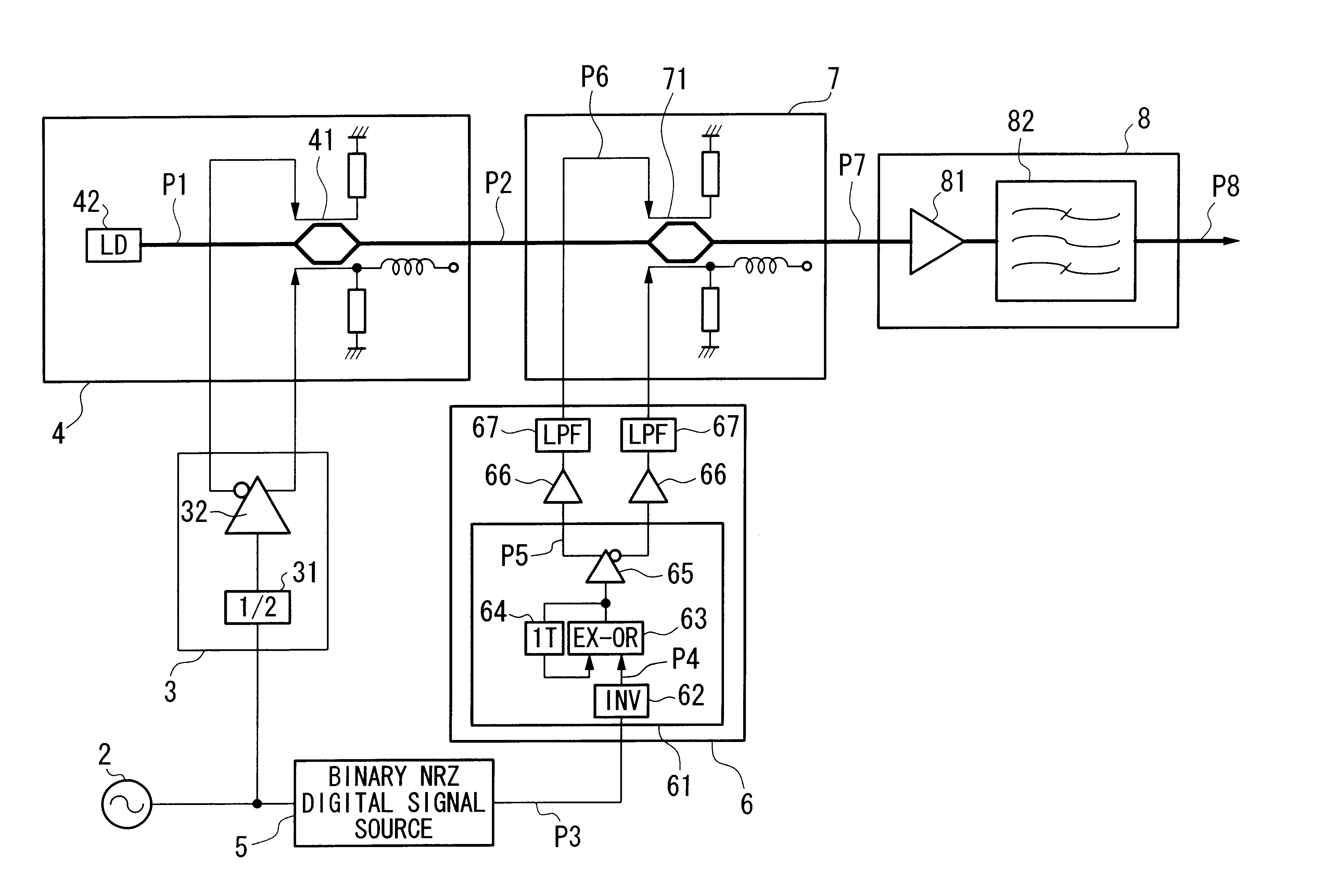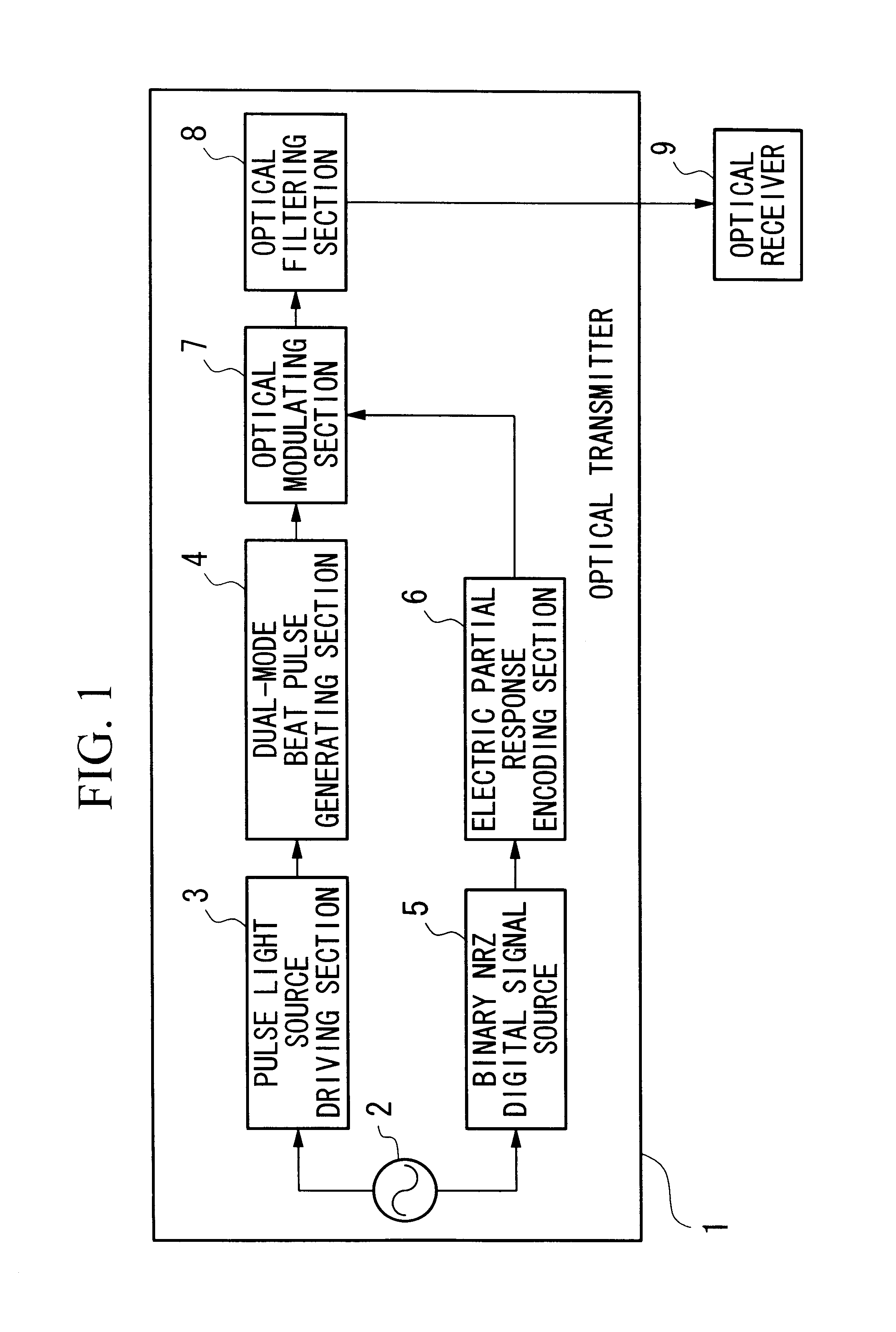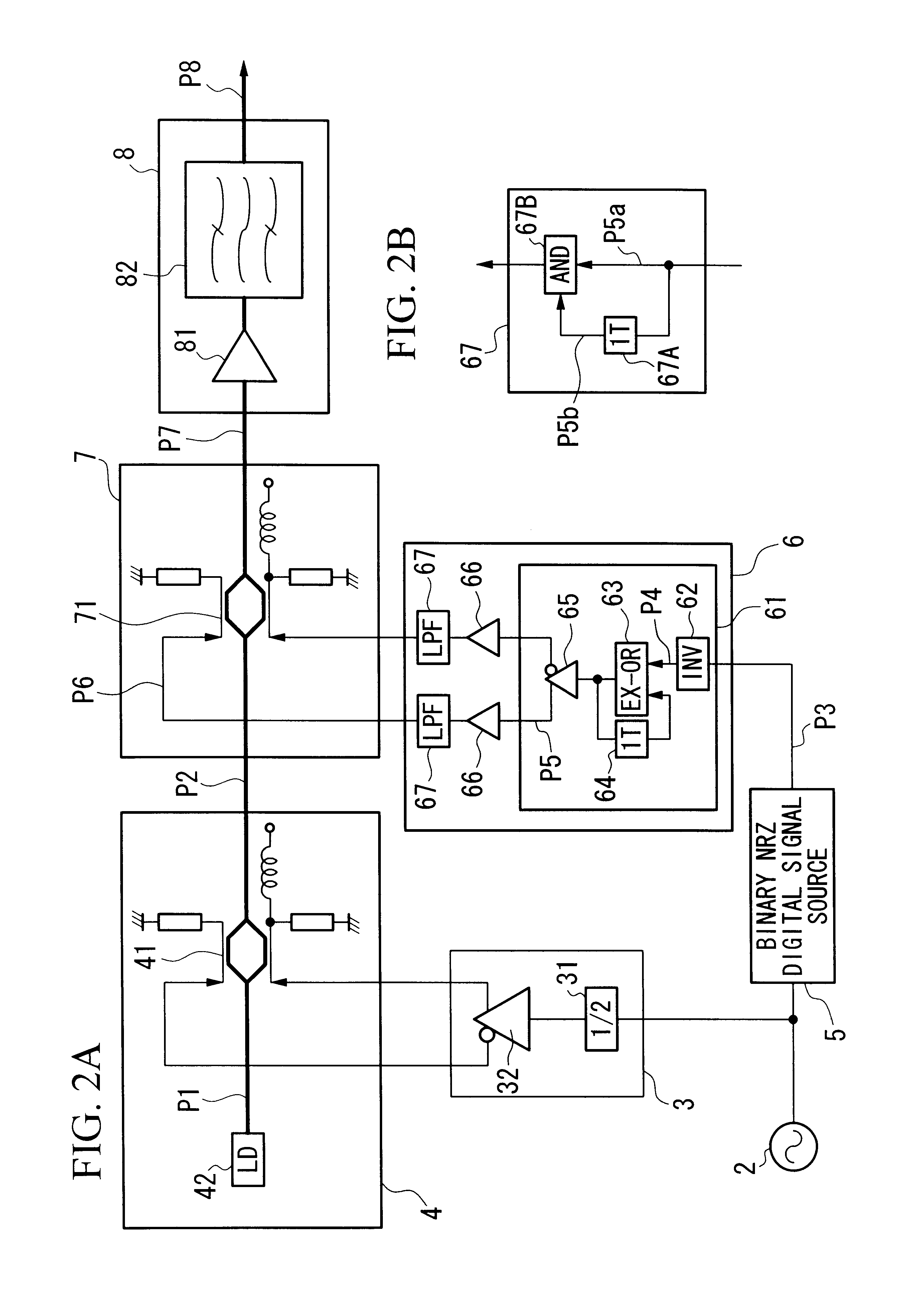Optical transmission method, optical transmitter, optical receiver, and optical transmission system
a transmission method and optical technology, applied in the direction of transmission, electromagnetic transmission, electrical equipment, etc., can solve the problems of chromatic dispersion interference between encoded signals, limited transmittable distance, and considerable intersymbol interference due to chromatic dispersion, etc., to achieve the widest dispersion tolerance, the effect of sufficient tolerance and long transmission path
- Summary
- Abstract
- Description
- Claims
- Application Information
AI Technical Summary
Benefits of technology
Problems solved by technology
Method used
Image
Examples
first embodiment
FIG. 1 is a block diagram showing the general structure of the optical transmission system as a first embodiment of the present invention. Reference numeral 1 indicates an optical transmitter, reference numeral 2 indicates a system clock source, reference numeral 3 indicates a pulse light source driving section, reference numeral 4 indicates a dual-mode beat pulse generating section, reference numeral 5 indicates a binary NRZ digital signal source, reference numeral 6 indicates an electric partial response encoding section, reference numeral 7 indicates an optical modulating section, reference numeral 8 indicates an optical filtering section, and reference numeral 9 indicates an optical receiver.
As shown in FIG. 1, the optical transmission system according to the present embodiment has the optical transmitter 1 for transmitting an optical signal modulated using an electric partial response encoded signal, and the optical receiver 9 for receiving the optical signal transmitted from t...
example 1
FIGS. 2A and 2B are block diagrams showing the general structure of the optical transmitter as a first example.
In the figures, reference numeral 2 indicates a system clock source, reference numeral 3 indicates a pulse light source driving section, reference numeral 31 indicates a ½ frequency-dividing circuit, and reference numeral 32 indicates a drive circuit.
Reference numeral 4 indicates a dual-mode beat pulse generating section, reference numeral 41 indicates an MZ (Mach-Zehnder) optical intensity modulator, and reference numeral 42 indicates a CW (continuous wave) laser (light) source.
Reference numeral 5 indicates a binary NRZ digital signal source, reference numeral 6 indicates an electric partial response encoding section, reference numeral 61 indicates a pre-coder, reference numeral 62 indicates a logical inversion circuit, reference numeral 63 indicates an exclusive OR (EX-OR) circuit, reference numeral 64 indicates a 1-bit delay circuit, reference numeral 65 indicates a diff...
second embodiment
EXAMPLE 1
FIG. 22 is a block diagram showing the general structure of a first example of the optical transmission system (an optical transmitter and an optical receiver) in the second embodiment according to the present invention.
In the figure, the present optical transmission system comprises an optical transmitter 101 for converting an optical duobinary encoded signal into a carrier-suppressed RZ optical duobinary encoded signal and transmitting the converted signal, and an optical receiver 102 for receiving the carrier-suppressed RZ optical duobinary encoded signal transmitted via an optical transmission medium 103 while dividing the bands of the received signal.
The optical receiver 101 comprises an optical duobinary encoded signal generating section 170 for generating a known optical duobinary encoded signal, and an optical modulating section 110 for converting the generated optical duobinary encoded signal into a carrier-suppressed RZ optical duobinary encoded signal by adding a...
PUM
 Login to View More
Login to View More Abstract
Description
Claims
Application Information
 Login to View More
Login to View More - R&D
- Intellectual Property
- Life Sciences
- Materials
- Tech Scout
- Unparalleled Data Quality
- Higher Quality Content
- 60% Fewer Hallucinations
Browse by: Latest US Patents, China's latest patents, Technical Efficacy Thesaurus, Application Domain, Technology Topic, Popular Technical Reports.
© 2025 PatSnap. All rights reserved.Legal|Privacy policy|Modern Slavery Act Transparency Statement|Sitemap|About US| Contact US: help@patsnap.com



